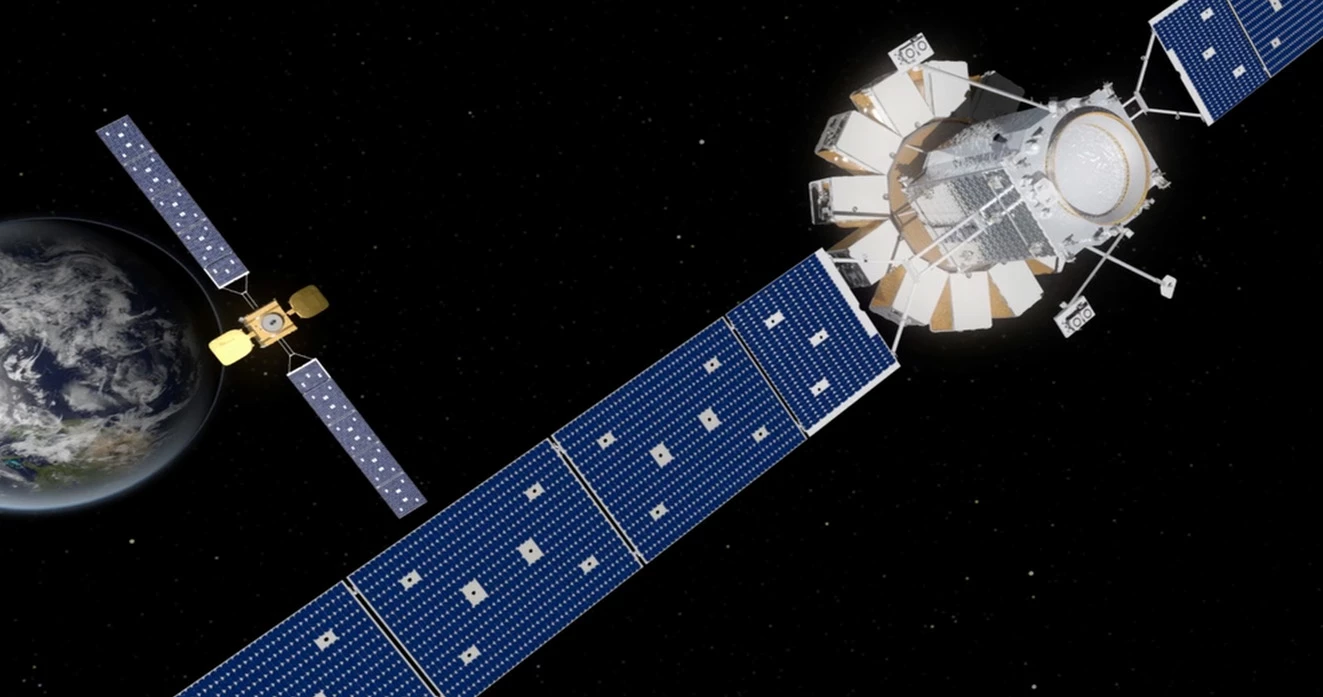Two unmanned commercial satellites have docked in orbit for the first time. On February 25, Northrop Grumman's Mission Extension Vehicle-1 (MEV-1) linked up with the Intelsat 901 (IS-901) communication satellite at an altitude of 22,416 mi (36,076 km) above the Earth as part of a project to extend the service life of satellites that are running low on propellants.
The building and launching of satellites is extremely expensive, so it's more than just frustrating when a perfectly good spacecraft has to be disposed of or abandoned simply because it has run out of the propellants needed to keep it in its proper orbit and pointed at Earth. There have been a number of solutions proposed for this problem – in this case Northrop's MEV-1 is designed to match orbits with aging satellites, dock, and take over the job of maintaining orbit and attitude.
MEV-1 was launched on October 9, 2019, and then executed a series of orbital maneuvers to rendezvous with IS-901, 180 mi (290 km) above geosynchronous orbit. Northrop says the target communication satellite was removed from service last December after over 19 years of service and its customers transferred to other Intelsats.

MEV-1 approached the stern of IS-901 and used a drogue mechanism to capture the satellite and pull itself in to dock over the satellite's now-inoperative main thruster. The combined spacecraft is currently undergoing system checks before MEV-1 takes over attitude and orbital maintenance in March.
If the test is successful, MEV-1 will remain docked for five years before sending IS-901 into its final decommissioning trajectory. MEV-1 will then undock and proceed to another aging satellite. In all, MEV-1 is expected to remain in service for 15 years. Meanwhile, MEV-2 is slated to launch in March 2020 and rendezvous with another Intelsat.
Eventually, Northrop and its subsidiary SpaceLogistics LLC plan to send up a fleet of such maintenance craft to not only extend satellite service life, but also for refueling, servicing, and robotic assembly of spacecraft.
"Our Mission Extension Vehicle provides an innovative, satellite life extension service," says Tom Wilson, president, SpaceLogistics LLC. "Together, Northrop Grumman, SpaceLogistics LLC, and Intelsat have taken the first step in pioneering in-space logistics services for both commercial and government customers."
The video below gives an overview of the MEV-1 mission.
Source: Northrop Grumman












